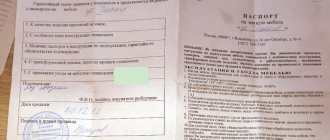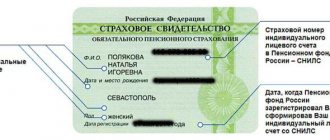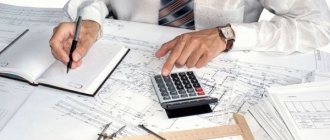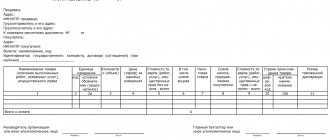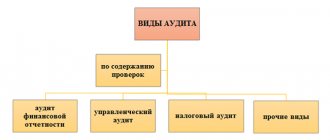Water supply
Water supply usually includes everything related to water in the apartment, but in fact it is a narrower term, although it includes not only the supply itself. It includes the preparation, transportation and supply of water to apartments. In this case, both centralized and non-centralized hot and cold water supply systems can be used, which must also be filled out separately on the receipt.
Preparation includes filtration and purification, composition analysis - all this must be controlled so that the consumer receives clean, high-quality water. For transportation and supply, it is necessary to maintain the condition of water pipelines, maintain pumping stations, and so on - this is where the money that consumers pay for water goes. With regard to hot water, we should not forget about the maintenance of boiler rooms, which also requires funds - that’s why it costs more.
Cold (CW)
Cold water supply implies the provision of cold water of established quality, uninterrupted throughout the day (except for the period allocated for breaks). In this case, water must be supplied directly to the living space, or to the water intake column, and in the required volume. These requirements are formulated in Government Decree No. 354, and the supplier must strictly comply with them in order to charge for their services in accordance with the established tariff.
As for permissible interruptions in the supply of cold water, they amount to no more than eight hours in total per month, and no more than four hours at a time. Breaks of this length are allowed in case of malfunctions in the centralized cold water supply network. These standards are established in the Construction Codes and Regulations (SP 31.13330.2012). If the period is exceeded, then the water fee must be recalculated.
Other parameters are also strictly regulated by legislative standards, and if they are violated, the supplier will have to bear responsibility: for example, water must comply with Sanitary standards and rules in its composition (SanPin 2.1.4.1074-01), and the pressure at the point of analysis must be 0.3- 0.6 MPa.
Hot (DHW)
Hot water supply also involves preparation, transportation and supply, but only hot water. In general, for the consumer it is not much different from cold water, but technically there are certain nuances, as a result of which the requirements for it are slightly different.
So, although the standard duration of breaks in the supply of hot water is the same as for cold water, that is, four hours at a time and eight in total per month, a couple more options are added. In the event of an accident on a dead-end highway, a break in the supply of one day is allowed; an annual interruption of supply for repair work is also provided. In accordance with SanPin 2.1.4.2496-09, the duration of such work can be up to two weeks; they are usually carried out in the summer.
The maximum deviation of water temperature has also been established: in the daytime it should be no more than three degrees Celsius, and at night (that is, from midnight to five o’clock in the morning) – five.
Water must comply with Sanitary norms and rules, and the pressure for it is set lower than for cold water - within 0.03-0.45 MPa at the point of water intake.
As for payment for water consumption, the abbreviation PC can be found on the receipt - it will mean an increasing coefficient. This is relevant for residents who have not installed meters.
Cold
What is water heating in the housing and communal services receipt? A new line for water heating has appeared in the housing and communal services receipt - what should we pay for? In accordance with PP No. 406 of May 13, 2021, it is recommended that centrally supplied hot water be divided into two components: the water itself, initially cold, and the consumption of thermal energy for heating it.
hot
Those residents who have not installed water meters in their apartments pay according to standard consumption. This can be beneficial only in one case - when the registration rules are violated, and in the area of the apartment where 1-2 people are registered, more people actually live, and the actual water consumption is much higher than that indicated in the receipt, because it is proposed to pay for consumption there two residents.
The calculation of the amount of payment for hot water supply provided for general household needs using a two-component tariff in this case will be made according to formulas No. 12 and No. 24 . Formula No. 12 calculates the volume of electricity supply, and formula No. 24 calculates the amount to be paid.
» for an apartment located in an apartment building; » the apartment hot water meter installed A two-component tariff for hot water supply is used for calculation .
More to read —> How Payment is Calculated Taking into Account the Insurance Proportion Coefficient
Calculation of the amount of payment for hot water supply to an apartment located in an apartment building
» payment for hot water provided for general house needs for an apartment located in an apartment building; » a common house meter for hot water supply is not installed in the apartment building ; » the calculation of the payment for hot water supply is carried out using a two-component tariff .
Even if the money for hot water supply has been paid, then if violations and incorrect calculations are detected when charging fees by the relevant organizations, the paid funds must be returned to the residents. Otherwise, the persons responsible for returning the money, on the basis of Art. 395 of the Civil Code of the Russian Federation, will be forced to return the amount of the debt with interest or pay a penalty for failure to fulfill obligations (if the condition for payment of the penalty is contained in the agreement between the parties (suppliers, organizations and consumers).
If water is taken from a water supply source by some third-party organization that has the right to do so, or is processed to turn it into drinking water, then the tariff for cold water can be set based on the material costs of this organization per 1 m 3 of water.
How are hot water tariffs set?
It was decided to introduce a two-component tariff to take into account energy and transportation costs, as well as heat loss. In this case, according to the law, only heat losses along the path from the central coolant supply points to the entry point into the houses are taken into account. That is, no losses from heated towel rails and risers in the premises should be taken into account.
- According to the Government Decree “On the procedure for providing utility services to owners and users of premises in apartment buildings and residential buildings,” the costs of such utility services are borne by all residents of the building and distributed equally among them.
- Paying for general house needs is not a whim of housing and communal services workers, but your direct responsibility, enshrined in law.
- Why do you need DHW on one unit? Hot water in the ODN is used:
- to discharge water in the riser during battery repairs and heating startup;
- for pressure testing of the heating system after repair;
- for technological drainage of the system before the heating season;
- general heating of the entrance and compensation of intra-house losses in water networks.
It was accrued, so that’s how it is. And the lazy, in this sense, a respectable citizen, goes and pays for everything on the list, calling it in one general word - “utility”. But this laziness takes a significant toll on your wallet, you just don’t notice it or don’t want to notice it.
Common house water needs: to pay or not
But, according to the same Resolution of the Government of the Russian Federation No. 354, the accrual for ODN on a common house meter cannot exceed average consumption rates (if the apartment does not have a meter). If, nevertheless, the calculation shows the amount higher, then the management company, as the provider of utility services, must pay this difference.
Important! This payment should be carefully considered by the owners of those apartments that do not use hot water, since their housing has an autonomous heating system installed. Housing and communal services specialists do not always pay attention to this, simply distributing the amount for water heater repairs among all citizens.
Water disposal
The fee for sewerage includes not only the direct drainage of water; in fact, it includes several services at once:
- drainage of domestic wastewater around the clock, that is, the same sewer system;
- their transportation within the boundaries of a populated area;
- further transportation outside the populated area.
Thus, the payment for sewerage means that the wastewater will not pollute the settlement in which you live - it is for work in this direction that it is charged.
Definition of concepts
Many Russians use the word drainage to mean sewage that flows through pipes to designated areas. However, you need to understand that used water not only flows somewhere, but also goes through complex technological processes.
The concept of drainage in housing and communal services includes several stages of sewage disposal:
- removal of hot and cold water through sewer networks after its use;
- disposal of filtered waste;
- transportation to water treatment plants;
- purification of consumed water;
- collection and removal of water resulting from precipitation.
Since all communications for drainage are municipal and industrial facilities, there are costs to maintain them in working condition. Therefore, consumers are required to pay for this type of service.
At the legislative level, relations between public utilities and tenants are regulated by the Federal Law of December 7, 2011 “On Water Supply and Sanitation.” Its norms relate to water supply and sanitation.
Difference between drainage and sewerage
You can often come across the opinion that sewerage is the same as sewerage. But this is not so, and to make sure of this, let’s look at the differences between them. If drainage involves directly removing wastewater from a home and then transporting it, then sewerage involves, in addition to removing wastewater from the premises, also its subsequent cleaning and disinfection in order to later be used for technical purposes or returned to the reservoir.
This means that sewer fees mean that the wastewater will be treated and conditioned, and ultimately returned to the ecosystem. For the operation of all the systems required for this, funds contributed by consumers are needed, and the purity of the water, which will then be used again for water supply, is determined by how well the complex of treatment facilities functions.
But the concepts of drainage and sewerage are confused, and sometimes even considered synonymous, for a reason: they have a lot in common. First of all, this relates to the removal from the premises in which the water was used, its further disposal both inside the house and outside it, and then to further transportation - all this will be done the same in both cases.
What do sewerage and drainage have in common?
As a general characteristic of sewerage and drainage measures, one can name their purpose, that is, the tasks they perform in the complex of utility services provided:
- transportation of wastewater from the water collection system directly from the premises where the water was used: from showers, bathtubs, sinks, toilets and other plumbing fixtures;
- drainage of wastewater inside a building - multi-apartment or private - to sewer risers;
- removal of waste liquid outside the house;
- transport of liquid to the cleaning site.
Additionally, this may include the task of accumulating, accumulating, settling and purifying wastewater, but this is already the task of the sewer system. All together, in accordance with the Federal Law on Water Supply and Sanitation No. 416 of December 7, 2011, it is a set of works designed to protect the environment from pollution during the exploitation of water resources by consumers.
Naturally, no cleaning can completely free the environment from pollution from water waste. But in accordance with the sanitary requirements of SanPiN 2.1.5.980-00.2.1.5. “Water drainage of populated areas, sanitary protection of water bodies. Hygienic requirements for the protection of surface water”, the level of pollution of external objects must remain strictly defined. The fact is that the purity of water resources that will be used for water supply depends on the quality of treatment of wastewater discharged into the external environment.
When clarifying the identity of the concepts of sewerage and drainage, it is difficult to give an unambiguous answer, since in the current legislation their differences are not indicated with the necessary clarity. It is most often believed that drainage is a broader concept, which, among other activities, includes sewerage. Both of these, together with other utilities, constitute a system for maintaining the functioning of the living space.
Wastewater concept
Wastewater is fresh water that has changed its properties due to industrial or domestic (in this case, this is the option) human activity. Accordingly, industrial, domestic and rainwater wastewater is separated.
Domestic wastewater is generated in residential buildings. They contain both mineral and organic pollutants, and are found in dissolved, undissolved, and colloidal states. This diversity determines the specificity of their purification, which is often more complex than for industrial waste.
Due to the heterogeneous composition, complete wastewater treatment cannot be carried out, and a sufficient degree of purification is regulated by Sanitary norms and rules, as well as standards of maximum permissible concentrations (MPC).
Cold water supply and wastewater billing center
Control of resource consumption in multi-apartment buildings is a function of special organizations that are located in each locality. These Centers perform a number of functions, including:
- control of pipeline operation;
- guarantee of uninterrupted provision of resources;
- installation of water meters, as well as calculation of service consumption rates based on the number of users;
- control of general house maintenance;
- application of sanctions to persons who have made late payments.
Another function is checking water quality and timely purification of resources.
Metering devices
In addition to a regular water meter, you can also install a wastewater flow meter - in this case, the payment for sewerage will be calculated based on its readings. This device is installed directly on the sewer pipeline and measures how much water flows into it. There are both apartment metering devices (KPU) and common house metering devices (DPU).
First of all, installing such a device will be beneficial if you live in a private sector, where a significant portion of the water is not sent to drains, but is used, for example, for irrigation or other similar activities.
With active water consumption without draining it into the sewer system, payments for hundreds of liters can be saved per week due to the flow meter, which makes its installation absolutely mandatory - the device pays for itself in a matter of months. In an apartment, the savings will be much less noticeable, and therefore the installation of a flow meter can no longer be called so necessary.
There are two types of flow meters based on their operating principle:
- measuring the water level in the pipeline;
- measuring the level and flow rate.
A device of the first type can be used for a non-pressure collector, that is, if the drains move without pressure, solely due to the inclination of the pipe and gravity. The second type of device is used in pumping systems.
What is drainage in utility bills?
The spent water goes down the drain and then undergoes a complex recycling process. To implement it, a special technology is used, which is associated with considerable financial costs.
What is drainage in utility bills? This is a service that every person is obliged to pay for, regardless of where he lives - in a private building or in an apartment building. Because water itself cannot be recycled. Liquid waste, as well as the garbage that residents put into special containers every day, must undergo a difficult destruction process. But what is this process? What stages does it consist of?
Calculation of drainage
The procedure for calculating the amount to pay is simple - you need to sum up the used cold and hot water for the period, and then multiply the resulting figure by the tariff established for sewerage.
For example, with a tariff of 27 rubles 01 kopeck (this is exactly what has been established in Moscow since July 1, 2021) and water consumption of 7.5 cubic meters of cold and 4.3 cubic meters of hot water per month, the following will result:
27.01 x (7.5 + 4.3) = 318 rubles 72 kopecks will be the payment for sewerage.
But this is if you have a water meter. If it is absent, then consumption will be considered according to the standard and, accordingly, water disposal too. The standard varies by region, but is usually much higher than the meter readings. For example, in the previous example, consumption roughly corresponds to a family of three. Let’s now try to calculate how much the same family will have to pay according to the standard.
For Moscow, the consumption standard for 2021 is 5.48 cubic meters of cold and 3.81 cubic meters of hot water per person. You can calculate it as follows:
(5.48 + 3.81) x 3 = 27.87 cubic meters a family of three will use up in a month according to the standard, versus an average of 10-12 in reality. Accordingly, you will have to pay more for both water supply and sewerage - for the latter 27.87 x 27.07 = 752.77 rubles. The overpayment for just one sewerage system will be more than 400 rubles per month, which clearly encourages the installation of a meter.
In addition to a separate meter in a home, a common meter can also be installed for an apartment building: in this case, the standard will be calculated according to its indicator, which will significantly reduce it, but in any case, it is better to get a separate meter in the apartment.
The most effective would be a special wastewater flow meter, which will show the exact value of wastewater, as a result of which you will not have to use the readings of a regular meter to calculate payments for sewerage.
Types of payments
The payment document reflecting the list of paid services is a receipt, which is sent to the homeowner on a monthly basis. However, a detailed calculation of housing and communal services payments is not included in this document. It only indicates the types of services, indicating consumption rates and meter readings. Before paying, you need to clarify whether the invoice is correct.
Speaking directly about the general receipt for payment of utilities, it is necessary to indicate what types of payments should be included in the document in question:
- tariffs for water supply and sewerage, latest meter readings, or average cost per month;
- heating (in some houses it is calculated only during the heating season and is based on tariff indicators, and in some all year round in a single set amount);
- gas supply and maintenance, which also assumes an average indicator, or the results of reading the meter;
- electricity, which is reflected in the form of kW indicators per month;
- major repairs;
- maintenance of common property.
If additional services are available, the management company will also issue invoices for payment according to the tariffs.
Separate mention should be made about each type of payment, since they have their own characteristics of calculating payment and establishing average consumption indicators and tariffs.
For housing services
This category includes payments related to the maintenance of common property. There are no counter indicators provided here. The management company sets tariffs for intercom maintenance, cleaning, property maintenance, garbage removal, and so on. In this case, the cost should be determined according to the standards established by the region.
The cost of housing services is also confirmed by contracts with such suppliers. For example, the management of solid waste, that is, garbage removal, is provided by the relevant company of the city, with which the management company enters into an agreement, negotiates a price, and then, based on the agreement, issues an invoice to the homeowner.
For utilities according to standards
The list of utility bills includes payment for those services for which it depends either on the amount of consumption or on average standards. If the homeowner does not have metering devices, then the management company issues an invoice based on average indicators.
For example, accounting for the amount of water consumed in an apartment is not provided due to the lack of meters. The Criminal Code determines the average amount of consumption - 5 cubic meters of hot water per month, regardless of whether this amount is actually consumed or not. Accordingly, payment occurs at the regional tariff for 5 cubic meters. The owner can spend less or more hot water, the amount of payment will remain unchanged. The same principle applies when determining the cost of light and gas.
For utilities according to meter readings
The next category of payments is based on readings from utility meters. The amount of the provided payment for housing and communal services is determined according to the amount of gas or light actually used. From here the corresponding payment is formed.
For example, for a month the electricity meter showed consumption of 160 kW. Consequently, the specified amount of electricity will be paid according to the tariff. However, next month the figure may be different. This type of payment is more convenient and correct, but only applies if there are meters in the apartment.
Read with this
- Categories and groups of classification of water supply systems
- Federal Law “On Water Supply and Sanitation” dated December 7, 2011 No. 416-FZ Article 6 (as amended on April 1, 2020)
- Features of analyzing water from a well: when is it necessary and what is the cost?
- A supply of hot water that is always at hand: how does an electric water heater for heating work?
- Toilet flush cistern
- What is a boiler for heating water: types, applications and some nuances of operation
- Manufacturing and connecting a sauna stove with a water heat exchanger
- Hydraulic accumulator selection and principle of operation
- How to make water filters with your own hands?
- How to clean a well and water
Charging
The fee will be calculated either by multiplying the meter readings by the established tariff, or by multiplying the same standard per person by the tariff, and then by the number of persons registered in the apartment.
We will look at how tariffs are set separately, and as for the standards, most often they do not differ very much by region, but there may be significant differences. For example, in Samara the standard for cold water is 7.9 cubic meters per month, and in Krasnodar - 4.04; in Yekaterinburg for hot – 5.04, and in Ufa – 2.582. The numbers depend on theoretical calculations of water consumption in the area and the degree of greed of authorities and enterprises (to a greater extent).
Standards are approved annually, proposed by local wastewater companies, after which they must be approved by local authorities and published in the media. When calculating the standard, it is necessary to take into account such parameters as the type of development and climatic zone - usually in the northern regions it should be set lower than in the hotter southern regions, but as can be seen from the fact that in Krasnodar the standard is almost twice as low as in Samara - this is not always observed.
First line - DHW
Since payment for heat supply is charged only during the heating season, heating the air through the use of a heated towel rail was not paid for as a utility service. These unaccounted expenses fell on the shoulders of the resource supply organization. The government found a way out of this situation by dividing the tariff into 2 components.
How to calculate hot water consumption in an apartment?
Why did the government make this decision, dividing the payment for hot water into 2 components? The fact is that risers and heated towel rails connected to the hot water supply system consume thermal energy, but this consumption was not previously taken into account in calculations of utility bills.
The only significant drawback is that a powerful water heater must be installed. The system is characterized by greater complexity, since heat exchange must be ensured. Therefore, difficulties may arise during maintenance.
An open hot water system is characterized by the fact that water is taken from the heating network. This moment determines the possibility of using the environment exclusively for solving everyday needs: washing dishes, laundry, cleaning the room. The medium can be heated up to a temperature of +75°C. Its advantages include the following points:
Cold water supply
- Heating boiler. It is responsible for increasing the temperature of the environment. Depending on the performance of the system being created, the boiler can operate on electricity or fuel. Modern equipment operates on the basis of automation, which reads the pressure in the system.
- Circulation pump. Often, when creating a heat supply, they are faced with the problem of a long pipeline length, as well as the need to raise water to a height. The circulation pump creates the required pressure and significantly increases the heating process.
- Top or bottom wiring. The most common is the lower one, since it involves placing the main equipment in the basement. This arrangement greatly simplifies the maintenance procedure.
- The entry of various impurities into the pipeline reduces the quality of water. Therefore, the installation of various filter elements is provided. During long-term operation of the system, it is necessary to periodically clean the filter elements, otherwise the pressure in the pipeline may increase significantly.
May 23, 2021 uristgd 32
Share this post
Related Posts
Tariffs for the service
Tariffs, like standards, must be set every year, and local authorities also do this. The exact tariff will depend on parameters such as:
- wear and tear of the sewer system;
- condition of treatment facilities;
- the number of maintenance personnel and the number of man-hours of repair crews required to maintain their condition.
Fees for drainage are aimed at maintaining the sewerage and water treatment systems, as well as providing payments to the personnel who will do this; accordingly, if simple maintenance is no longer enough, and some of the systems require repairs, this should be included in the tariffs.
They are usually raised early to prevent spikes, and funds are gradually built up before repairs are made.
Accordingly, depending on the locality, utility tariffs can vary quite significantly. Their exact current values should be freely available, and if necessary, you can check them either with the local administration or with the management company.
Water heating equipment
As a result, these apartment owners have to pay for equipment they did not use. If you discover an increase in the tariff for repairs and maintenance of property, you need to find out what this is connected with and contact the management company for recalculation if the payment was calculated incorrectly.
Thermal energy component
This is how DHW appeared on the receipt, that is, the thermal energy spent on heating cold water. Housing and communal services specialists came to the conclusion that risers and heated towel rails, which are connected to the hot water supply circuit, consume thermal energy to heat non-residential premises. Until 2021, this energy was not taken into account in receipts, and consumers used it free of charge for decades, since the air in the bathroom continued to be heated outside the heating season. Based on this, officials divided the tariff into two components, and now citizens have to pay for hot water.
- climatic zone in which apartment buildings or private houses are located;
- design and technical parameters of the house;
- presence/absence of an external DHW network;
- presence/absence of insulation of risers and heated towel rails.
How to calculate water drainage using a meter: tariff, formula and calculation example
Despite the fact that provider companies have the opportunity to independently set the cost of their services, the Government has approved a unified formula for calculating resource consumption. In particular, the cost of water consumption can be calculated using the following algorithm:
(cold water supply + hot water) * fixed sewerage tariff = payment amount.
As practice shows, the average price for one unit of services is up to 300 rubles per month. This figure varies by region.
Major renovation
This is the simplest service in terms of charging. Here the amount is tied only to the area and does not depend on the number of living and registered family members. For residential premises, a subsidized tariff is applied - in January it was 0.0880 rubles per 1 m2, for non-residential premises it is economically justified.
Example . We multiply 75 m2 by 0.0880 rubles and get 6.60 rubles. By the way, everything fits here precisely because the tariff did not change during the month.
Overhaul according to the rules. What do you have to pay for? More details
Before moving on to calculating water charges, let's make some clarifications. By “cold water supply” we need to understand all the water that flows out of your tap - both cold and hot (in our example - 20 m3). The cost is calculated using the same principle. But the cost of heating water will depend only on the reading of the hot water meter.
Water disposal (sewage)
Drainage involves discharging spent water into the sewer system. Therefore, the same readings of water meters (hot and cold in total) are taken into account here and the same standards apply.
Within the normal limits, the fee is charged at the approved subsidized tariff, which since January 26 has increased to 0.3540 rubles per 1 m3. Everything that is higher than the norm is more expensive. In particular, in Minsk - 0.5103 rubles per 1 m3.
Example. We pay the 13.02 m3 required by the standards at a subsidized rate. This is 2.85 rubles. At economically reasonable rates we pay for the remaining 6.98 m3 - 3.24 rubles.
Smells like sewer: how to find out and eliminate the cause Read more

